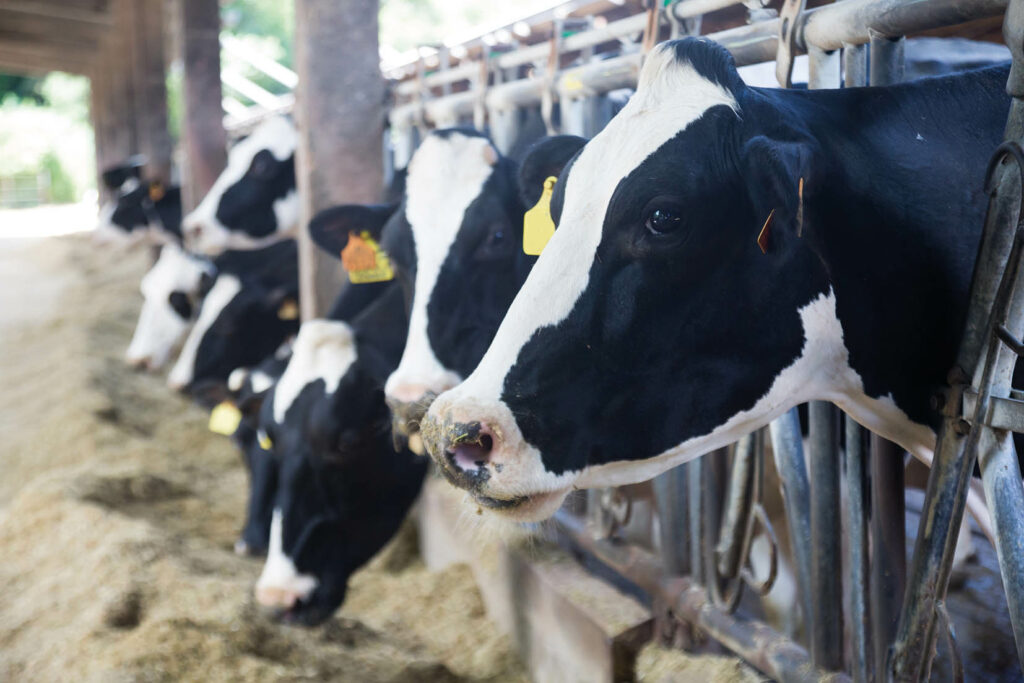Maximising health during winter housing
21st October 2022
Veterinary pharmacologist and Provita Ltd adviser Dr Tom Barragry offers advice on preventing lameness and trace element deficiencies in cattle.

Winter housing can be an incredibly stressful time for cattle. Elevated cortisone levels in stressed animals can have numerous potentially harmful effects on the animal’s immune system. Stress factors around housing include moving to new housing, temperature changes, crowding, confinement, feed quality issues and other new environmental challenges which may easily result in a reduction in the functioning of the animal’s immune system – and hence an increase in the spread of diseases, especially as cattle may be in a confined space which can hasten the spread of infections.
Simple things like access to fresh water, enough space to lie down comfortably, good flooring, slurry removal and equal feeding space can be the difference between health and sickness. On many farms, winter housing will be the first time that groups of animals are mixed, and as a result the chance of a disease outbreak occurring increases. Amongst the major disease problems in housed cattle are hoof problems and trace element disorders.
Lameness
There is usually a steep increase in lameness incidence over the winter period. Hard concrete floors, slats, wetness, lying areas, and slurry underfoot can all predispose to hoof problems. Hoof health problems are serious issues in cattle that can cause tremendous economic losses. Factors such as overcrowding, flooring type, nutrition and trace element status all play a role here.
Lameness is one of the three main challenges facing dairy farmers all year, but at housing the risk is heightened. Reported lameness prevalence has been higher in housed systems and lower in pasture-based systems because pasture provides an optimal walking surface for improved mobility. Published reports have shown that cows housed on concrete were five times more likely to be diagnosed as lame as those housed on rubber mats over concrete. Lameness is a costly gateway disease which makes cows more likely to suffer from mastitis, milk fever, reduced milk yield and infertility. A regular foot bathing protocol with a proven non-toxic foot bath is an effective way to tackle foot disorders, especially digital dermatitis, which can result from lack of underfoot hygiene, bacterial infection, and failure to remove slurry.
Dr Nick Bell, veterinary surgeon and director of Herd Health Consultancy, states that Hoofsure Endurance is “the only product I’ve ever trialled that has performed as well as formalin at preventing new lesions, and I’ve trialled a lot of products”. Hoofsure Endurance is a proprietary footbath solution with over 40 trials across three continents. Notable research on cattle shows it is up to 44% more effective than formalin and copper sulphate, with proven antibacterial activity. With innovation at the heart of Provita, the dedicated research and development team have developed a new improved formula. Utilising proprietary technology, the new formula is 33% faster acting and provides more contact time on the hoof. It is also cost-effective, with 20 litres being effective for up to 5,000 cows.
Trace elements
Traditionally, trace elements have been easily overlooked because most of the signs of a mild deficiency are manifested as barely visible subclinical or low-level ill thrift, but trace elements perform a variety of vital roles, including energy metabolism and immune response. Trace element availability in both grass and forage is altered by lots of factors, including soil type, pH, geology, drainage, plant type, weather and the process of silage making. Hence it varies from farm to farm and within different cuts of silage. Winter silage is only as good as the soil and herbage that it was sourced from, and also the silage making technique. Thus, there are variables here which can affect trace element levels.
In the UK in 2018, an analysis of 320 grass silage samples showed high levels of potassium and low levels of copper, zinc, iodine and selenium. Low copper (or high molybdenum) is commonly associated with ovarian inactivity, poor conception, embryonic death, and delayed puberty. Low iodine can be responsible for still births, abortion, and weak calves. Low zinc is associated with lameness, mastitis, and disease susceptibility. Low selenium with retained placenta, metritis, extended calvings, depressed immune function and poor conception rates. Hence regular supplementation whilst on silage may be necessary.
Targeted dosing with trace elements and vitamins is often warranted. Oral drenching is usually less expensive than boluses, and it also allows for targeting of delivery to certain animals or at specific stress periods during the grazing season or winter housing where only short-term cover is needed. It may also be more cost effective in the long term as it targets delivery to the most susceptible animals. Drenches also have the advantage that they can contain large numbers of trace elements in high concentrations to address the deficiency. Also, vitamins can be included to enhance the actions and boost effectiveness of the trace elements.
Provita Animal Health’s ProVitaMin Cattle is a highly concentrated complex mineral and vitamin drench for adult cattle and young calves. It comprises 26 broad spectrum elements, supplying chelated minerals, vitamins, and nutrients to swiftly elevate levels. ProVitaMin is an easy-to-use solution with supplementary rates as low as 1mL per 10kg for calves up to a maximum of 50mL for adult cattle. Provita is running a special offer to buy 2.5 litres and get 1 litre free. To contact your local farm representative, get in touch with Provita directly.
